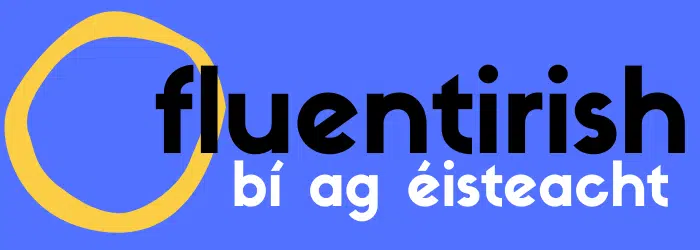Irish Language Terms For Easter And Lent That You Should DEFINITELY Know 🐰
Irish Language Terms For Easter And Lent 🐰: In this blog, we share with you a bit of background about Lent and Easter’s history in Ireland. We will also talk about some of the most common terms used in Lent and Easter that you should definitely know of. Continue reading this blog to learn more.
Some people might want to visit Ireland because they want to find their Irish roots, some maybe because of its world-renowned Gaeltacht areas that you can go to for your holidays, or they simply want to strengthen their faith and go to one of the oldest Catholic countries in the world.
Not just one of the oldest, Ireland is also probably one of the most famous Catholic countries in the world. History suggests that our Irish ancestors upheld our religious beliefs without any hesitation for many, MANY years. Around 1,500 years ago, Catholicism arrived in Ireland and spread through the works of voluntary missionaries. From there on, lots of significant events transpired, which leads us to today.
Irish terms for Lent and Easter: general information
Now, before we go to some of the Irish language terms for Easter and Lent, we want to share with you a bit of history.
Anois, sula rachaimid chuig cuid de na téarmaí Gaeilge don Cháisc agus don Charghas, ba mhaith linn beagán den stair a roinnt libh.
Two yearly religious events that Catholicism gave Ireland are Lent and Easter. Just a few days ago, the Lenten season has already begun with Ash Wednesday. Ireland, being a dominantly Roman Catholic country, Lent has been strictly followed in Ireland for more hundreds of years.
Traditions that our fellow Catholic Irish folks have followed for more years than we can ever remember include receiving Blessed Ashes on the forehead and strict abstinence that lasts six weeks. Children more than seven years old and above, for example, were not even allowed milk during the Lenten season. The younger ones only receive little, and parents/guardians can only give them if they cried three times. As for adults, they can only eat one full, albeit rationed, meal a day. Oh, and no drinking as well. You have to sacrifice for six weeks and abide by the regulations, which no Irish person seems to have a problem following at all.
Happy times
But by the end of the Lenten season comes Easter, one of the most fun times of the year in Ireland. This marks a day of feast, with the well-known Easter bunny and chocolates collaborating together to make children happy. This holiday bears the same weight when it comes to significance with Christmas and St. Patrick’s Day. And obviously, Easter is just as a happy – maybe even more – holiday as those two mentioned!
With a bit of history mentioned, we now move on to some Irish terms for Lent and Easter that you should definitely know of when you come visit Ireland during these seasons. Below, we share you with some of these terms that may come in handy. Read on to learn more.
Agus beagán staire luaite, bogaimid ar aghaidh anois go dtí roinnt téarmaí Gaeilge don Charghas agus don Cháisc ar cheart go mbeadh a fhios agat go cinnte agus tú ag tabhairt cuairte ar Éirinn le linn na séasúir seo. Anseo thíos, roinnimid roinnt de na téarmaí seo leat a d’fhéadfadh a bheith úsáideach. Léigh ar aghaidh chun tuilleadh a fhoghlaim.
>>Check out the latest podcasts on FluentIrish.com – and start improving!
Take note of these Irish language terms for Lent and Easter
Planning to buy a Happy Easter card in Gaelic to send to your Irish family, relatives or acquaintances? Or do you just want to learn some Irish terms for Lent and Easter? Either way, learning these terms will be useful for you for a number of reasons such as broadening your Irish language knowledge, impressing some Irish folks if you happen to visit Ireland and just becoming a better communicator in general.
Lent terms
Lent in Irish translates to An Carghas. But, what about the days of the Holy Week?
Domhnach na Pailme means Palm Sunday. In the event that no palm is available, then the day is called Domhnach an Iúir. Below, we have other examples:
Déardaoin Mandála – Maundy Thursday, Holy Thursday
Aoine an Chéasta – Good Friday (lit. the Friday of the Crucifixion)
Some Easter terms
In this section, we share with you some Irish terms for Easter.
First off, how do we write and say Easter Sunday in Irish? Answer: Domhnach Cásca – Easter Sunday. Another, we have Aimsir na Cásca. This term means Eastertide. Aimsir here means its extended meaning of ‘time’, not ‘weather’ as it is is normally known.
What about Easter Monday? Well, the proper Irish translation for that is Luan Cásca. Below, we enumerate more Irish terms for Easter:
uibheacha Cásca – Easter eggs
cloig Chásca – Easter bells
Uan Cásca – paschal lamb
uain Chásca – Easter lambs
Lus Cásca – pasque-flower
A big thanks to róislín of Transparent Language’s Irish Language Blog.
Buíochas mór le róislín ó Transparent Language’s Irish Language Blog.
Learn Irish through Fluent Irish
Now that we have shared with you some examples of Irish language terms for Lent and Easter that you should definitely know, we also want to discuss with you how we can help you in everything Irish-related.
ba mhaith linn plé leat freisin conas is féidir linn cabhrú leat i ngach rud a bhaineann leis an nGaeilge.
If you can understand simple Irish, you will want to improve. Fluentirish is here for you. Listen every day to get on with Irish.
Má tá tú ábalta Gaeilge shimplí a thuiscint – beidh tú ag iarraidh biseach a dhéanamh. Tá Fluentirish anseo faoi do choinne. Bí ag éisteacht gach aon lá chun a bheith ag gabháil ar aghaidh i nGaeilge.
We provide informative blogs and helpful podcasts that can help in your quest to learn the Irish language, so make sure to check out our website!
>>Which level?: Find out which level of spoken Irish you understand!




